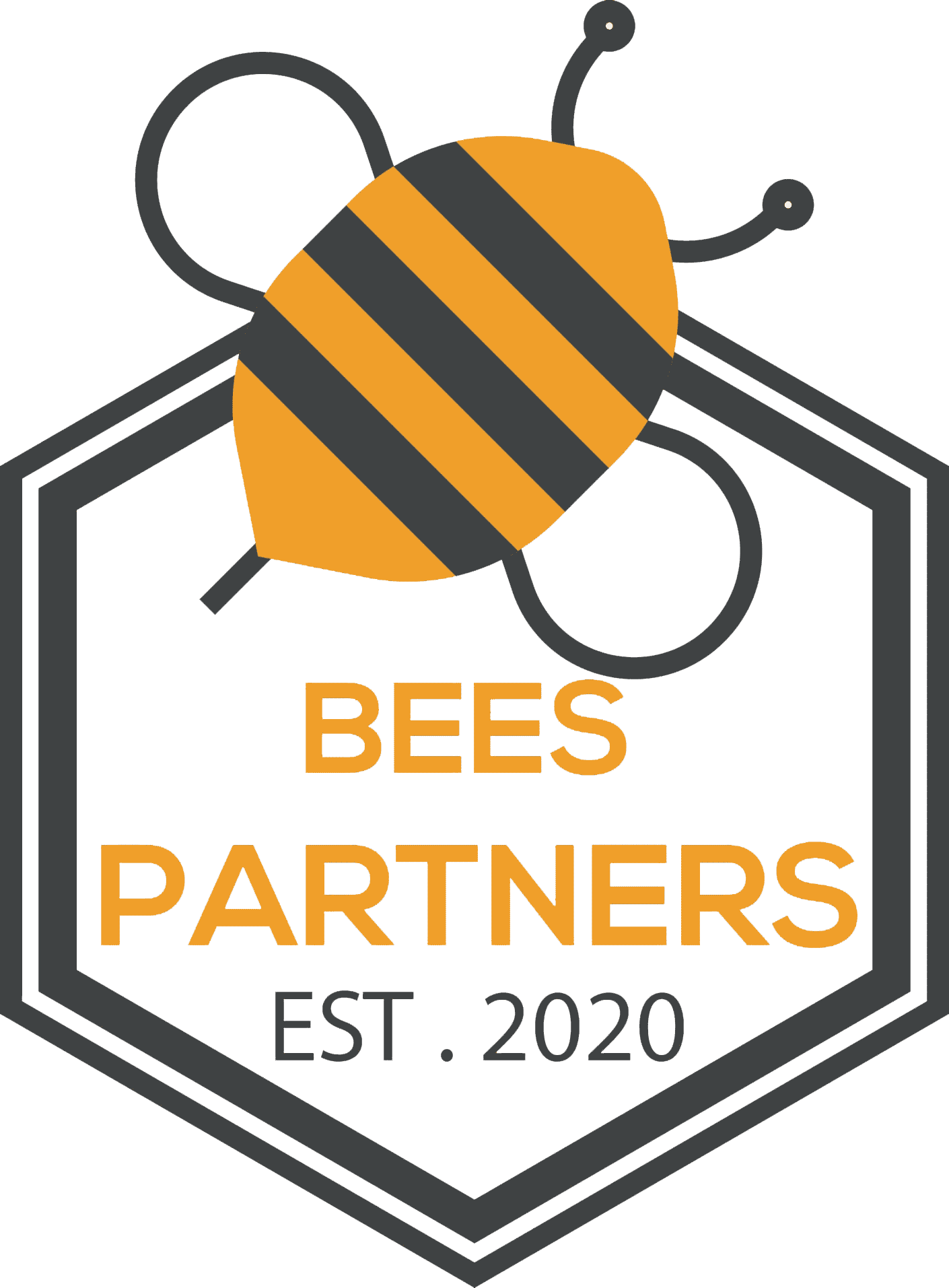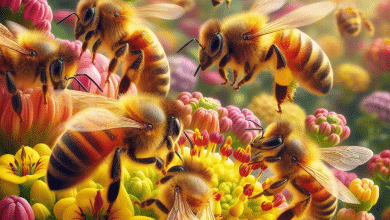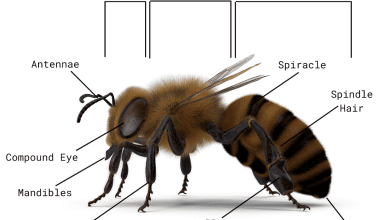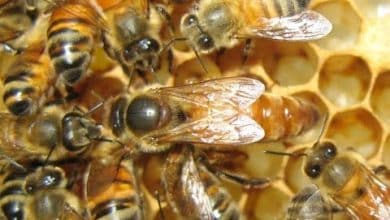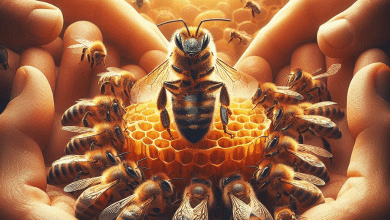Mastering the Art of Queen Rearing Techniques and Tips

Queen Rearing in the world of beekeeping is an art that requires skill, patience, and a deep understanding of the intricacies of these incredible creatures. Whether you are a hobbyist beekeeper or a commercial operator, mastering the art of queen rearing can be immensely beneficial. From increasing the population of your colonies to selectively breeding for desirable traits, queen rearing opens up a whole new realm of possibilities in beekeeping.
So, what exactly is queen rearing? It involves intentionally producing new queen bees to replace old or lost queens or to create new colonies. This can be done through various techniques, each with its own advantages and considerations. Some common methods include walk-away splits, swarm cells, and the grafting method.
Understanding the importance of queen rearing in beekeeping is crucial. Queens are the heart and soul of a honeybee colony, responsible for laying eggs and ensuring the growth and survival of the colony. By actively raising queens, beekeepers can have greater control over the genetics of their colonies, potentially improving honey production, disease resistance, and overall colony health.
In this article, we will delve into the art of queen rearing and explore different techniques and tips to help you become a master in this field. We will discuss the grafting method in detail, providing a step-by-step guide and essential tips for success. Additionally, we will explore the use of queen rearing kits and their pros and cons.
Furthermore, we will cover the queen rearing timeline and management strategies, as well as the importance of evaluating queen health and maintaining genetic diversity. By the end of this article, you will understand why mastering queen rearing techniques is valuable in beekeeping and be equipped with solutions to common challenges that arise in the process. So let’s dive into the fascinating world of queen rearing and unlock the secrets to successful beekeeping!
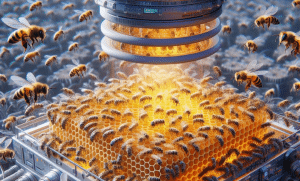
Contents
Understanding Queen Rearing
Queen rearing is the intentional process of producing new queen bees in order to replace old or lost queens or to create new colonies. It is a skill that requires knowledge and expertise in the biology and behavior of honeybees. By actively raising queens, beekeepers have greater control over the genetics of their colonies, which can lead to improved honey production, disease resistance, and overall colony health.
There are several different techniques used in queen rearing, each with its own advantages and considerations. Some common methods include walk-away splits, swarm cells, and the grafting method. Walk-away splits involve separating a colony into two or more parts, allowing the bees to naturally raise new queen cells. Swarm cells occur when a colony prepares to swarm, and beekeepers can transfer these cells to new hives to produce new queens. The grafting method involves manually transferring newly-hatched larvae into specially prepared queen cups.
Queen rearing is essential in beekeeping for several reasons. Queens are the heart and soul of honeybee colonies, responsible for laying eggs and ensuring the growth and survival of the colony. By selectively breeding queens with desirable traits, such as docility, honey production, disease resistance, and genetic diversity, beekeepers can improve the overall quality of their colonies.
In the next sections, we will explore the grafting method in detail, providing a step-by-step guide and essential tips for success. We will also discuss the use of queen rearing kits and their pros and cons. Additionally, we will cover the queen rearing timeline and management strategies, as well as the importance of evaluating queen health and maintaining genetic diversity in the process.
Different Queen Rearing Techniques
Queen rearing involves various techniques, each with its own advantages and considerations. Let’s explore some of the most common techniques used in queen rearing:
- Walk-Away Splits: This method involves separating a colony into two or more parts. By providing each part with the necessary resources, the bees will naturally raise new queen cells. Walk-away splits are relatively simple and require minimal intervention from the beekeeper.
- Swarm Cells: When a colony prepares to swarm, it creates special queen cells called swarm cells. Beekeepers can transfer these swarm cells to new hives to produce new queens. This technique takes advantage of the colony’s natural behavior and is an effective way to increase the number of queens.
- Grafting Method: The grafting method is a more advanced technique that involves manually transferring newly-hatched larvae into specially prepared queen cups. This requires precision and practice but offers the beekeeper greater control over queen production and allows for the selection of desired traits.
- Instrumental Insemination: This highly specialized technique involves the introduction of semen from a selected drone into the queen’s reproductive system. Instrumental insemination allows for precise control over the genetics of the colony but requires sophisticated equipment and training.
Each technique has its own set of advantages and challenges. It is important for beekeepers to understand the specific requirements and skills needed for each method before attempting queen rearing. Additionally, it is essential to consider the goals and resources of the beekeeper when choosing a queen rearing technique.
Importance of Queen Rearing in Beekeeping
Queen rearing plays a crucial role in beekeeping for several reasons. The queen is the central figure in the colony, responsible for laying eggs and maintaining the hive’s population. By participating in queen rearing, beekeepers can ensure a consistent supply of strong and healthy queens, contributing to the overall success and productivity of their colonies.
One of the primary reasons for queen rearing is colony expansion. As a beekeeper, you may want to increase the number of hives in your apiary or replace old or underperforming queens. By rearing your own queens, you have control over the quality and genetics of the new queens, allowing you to select for desirable traits such as docility, productivity, and disease resistance.
Moreover, queen rearing allows beekeepers to prevent or mitigate issues such as swarming. Swarming is a natural reproductive behavior of honey bees, but it can lead to the loss of workforce and reduced honey production. By proactively managing queen rearing, beekeepers can control the swarming impulse and maintain a stable colony population.
Another significant benefit of queen rearing is the potential to improve the genetics of the bee population. Through selective breeding, beekeepers can focus on enhancing desirable traits, such as honey production, resistance to pests and diseases, and tolerance to environmental factors.
In addition to these practical reasons, queen rearing can also be a rewarding and educational experience for beekeepers. It allows them to have a deeper understanding of honey bee biology and behavior while honing their skills in beekeeping.
Overall, queen rearing is of great importance in beekeeping as it enables beekeepers to maintain healthy and productive colonies, control population dynamics, and improve the genetic qualities of their bee stock.
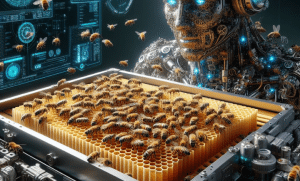
Grafting Method for Queen Rearing
The grafting method is a popular technique used in queen rearing, allowing beekeepers to selectively raise strong and desirable queens. This method involves transferring very young larvae into specially prepared queen cups, which are then placed in a queenless colony or a queenright colony that is prepared for queen acceptance.
The first step in grafting is to select the right age of larvae. Ideally, larvae should be less than 24 hours old and still floating in royal jelly. Using a grafting tool, carefully transfer the larvae into the queen cups. It requires precision and skill to ensure the larvae are properly placed in the cups.
Once the queen cups are filled with larvae, they are placed in a queenless or queenright colony. The colony needs to be prepared for queen acceptance, which involves creating a conducive environment for the bees to accept the new queen. This may include removing any queen cells from the colony and providing extra food resources.
During the rearing process, it is important to monitor the queen cups closely. Look for signs of acceptance or rejection by the worker bees. If acceptance is successful, the bees will build up a queen cell around the larvae, and the larva will develop into a fully formed queen.
The grafting method requires careful attention to detail and practice to master. It may take several attempts before achieving successful queen rearing. However, with experience and skill, beekeepers can produce high-quality queens with desirable traits such as gentleness, productivity, and disease resistance.
Overall, the grafting method for queen rearing is a highly effective technique for beekeepers who want to have control over their queen production and improve the genetic qualities of their bee colonies.
Step-by-Step Guide to Grafting
Grafting, although delicate and precise work, is an essential skill for successful queen rearing. Here is a step-by-step guide to help you master the grafting technique:
- Prepare the grafting tool: Ensure that your grafting tool is clean and sanitized before use. This will help prevent contamination and disease transmission.
- Select the right age of larvae: Look for larvae that are less than 24 hours old and still floating in royal jelly. These young larvae have the highest chances of acceptance by the worker bees.
- Transfer the larvae: Using your grafting tool, carefully transfer the larvae into the queen cups. The goal is to place each larva in the center of the cup, gently touching the royal jelly in the cup.
- Practice precision and patience: Grafting requires steady hands and excellent vision. Take your time to ensure that each larva is properly placed in the cup. It may take practice to develop the necessary skills.
- Prepare the queenless or queenright colony: Once the queen cups are filled with larvae, place them in a queenless or queenright colony that is prepared for queen acceptance. Remove any existing queen cells to increase the chances of acceptance.
- Monitor the queen cups: Regularly check the queen cups to determine if the larvae have been accepted by the worker bees. Look for signs of cell building and queen development.
By following these step-by-step instructions, you can increase your chances of successfully grafting young larvae and raising strong and desirable queens. Remember, practice and patience are key to mastering this technique.
Tips for Successful Grafting Process
When it comes to successful grafting for queen rearing, there are a few key tips to keep in mind. These tips can help increase the chances of acceptance by the worker bees and improve the overall success rate of your grafting process. Here are two important tips to consider:
- Timing is crucial: The timing of grafting is critical for success. Ideally, grafting should be done during the peak of the brood-rearing season when the bees are highly motivated to raise new queens. This usually falls between early spring and mid-summer, depending on the local climate. It’s important to graft when the bees are in optimal conditions and actively building queen cells.
- Maintain proper environmental conditions: The environmental conditions in which you perform the grafting process can greatly impact the success rate. It’s essential to ensure a clean and calm environment, free from any disturbances or distractions. Work in a quiet space and avoid any sudden movements that could disrupt the delicate process. Additionally, maintain proper temperature and humidity levels to provide the best conditions for larval acceptance and development.
By carefully considering these tips, you can greatly improve your success rate with grafting for queen rearing. Remember to be patient and gentle throughout the process, as the delicate nature of grafting requires precision and attention to detail. Monitoring the queen cells regularly after grafting is also crucial to ensure that the larvae are accepted and properly developed into strong and healthy queens.
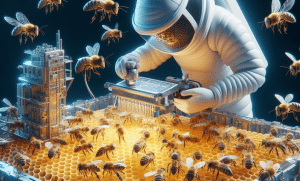
Using Queen Rearing Kits
Using queen rearing kits is a popular option for beekeepers looking to streamline the queen rearing process. These kits provide all the necessary tools and equipment to successfully raise queens, making it easier for both beginners and experienced beekeepers alike.
An overview of queen rearing kits:
Queen rearing kits typically include essential components such as queen cups, cell bars, queen excluders, and cell protectors. These kits may also come with detailed instructions or guides to help beekeepers navigate the process effectively. Some kits may even include grafting tools and specialized frames to further simplify the process.
Pros and cons of using kits for queen rearing:
One advantage of using queen rearing kits is the convenience they offer. Beekeepers can save time and effort by having everything they need in one package. This can be especially beneficial for beginners who may feel overwhelmed by the complexity of queen rearing.
However, it’s important to note that relying solely on queen rearing kits may limit a beekeeper’s knowledge and skills in the long run. Using kits can be a great starting point, but it’s essential to continue learning and understanding the underlying principles of queen rearing for sustainable beekeeping practices.
Moreover, some beekeepers prefer to customize their setup and choose individual components based on their specific needs. This level of flexibility may not be fully achievable with pre-packaged kits.
In conclusion, queen rearing kits can be a valuable resource for beekeepers looking to get started with queen rearing or streamline their existing processes. However, it’s crucial to strike a balance between convenience and developing a deeper understanding of queen rearing techniques.
Overview of Queen Rearing Kits
Queen rearing kits are designed to provide beekeepers with all the necessary tools and equipment needed to successfully raise queens. These kits are convenient and practical, especially for beginners who may be overwhelmed by the complexities of queen rearing.
A typical queen rearing kit includes essential components such as queen cups, cell bars, queen excluders, and cell protectors. These tools are specifically designed to create an optimal environment for rearing queen bees. Some kits even come with detailed instructions or guides to assist beekeepers in navigating the process effectively.
One of the main advantages of using queen rearing kits is the convenience they offer. By having all the necessary components in one package, beekeepers save time and effort in sourcing individual items. This makes the process more efficient and user-friendly.
Additionally, queen rearing kits can be beneficial for beekeepers who are just getting started in queen rearing, as they provide a structured and organized approach. The kits eliminate the guesswork and ensure that beekeepers have all the necessary tools at their disposal for successful queen rearing.
However, it’s important to note that relying solely on queen rearing kits may limit a beekeeper’s knowledge and skills in the long run. While these kits provide a convenient solution, it’s essential for beekeepers to continue learning and understanding the underlying principles of queen rearing for sustainable beekeeping practices.
In conclusion, queen rearing kits are a valuable resource for beekeepers looking to streamline the queen rearing process. They offer convenience, organization, and can be especially helpful for beginners. However, beekeepers should also strive to develop a deeper understanding of queen rearing techniques to enhance their beekeeping knowledge and skills.
Pros and Cons of Using Kits for Queen Rearing
Using queen rearing kits can have several advantages for beekeepers. Firstly, these kits provide convenience and efficiency by including all the necessary tools and equipment in one package. This saves time and effort in sourcing individual components, especially for beginners who may not be familiar with the specific items needed for queen rearing.
Secondly, queen rearing kits often come with detailed instructions or guides, which can be very helpful for beekeepers who are new to the process. These guides provide step-by-step instructions on how to use the tools and perform each stage of queen rearing. This not only simplifies the process but also promotes a structured and organized approach, ensuring that beekeepers have the necessary knowledge to successfully rear queens.
However, there are also some limitations to relying solely on queen rearing kits. One disadvantage is that using a kit may restrict a beekeeper’s understanding and skills in queen rearing. While the kit provides a convenient solution, it is important for beekeepers to continue learning and developing their knowledge of queen rearing techniques.
Another limitation is that queen rearing kits may have limited customization options. Each beekeeper’s needs and preferences may vary, and a kit may not provide the flexibility to adapt to specific circumstances or preferences.
In conclusion, queen rearing kits offer valuable convenience and guidance for beekeepers, especially those who are new to queen rearing. They provide a structured approach and save time in sourcing individual tools. However, it is important for beekeepers to supplement their knowledge beyond the kit and be aware of its limitations in customization.

Queen Rearing Timeline and Management
Queen rearing involves a specific timeline and management practices to ensure successful queen development and the overall health of the colony. Understanding the different stages of queen development and implementing efficient management techniques is crucial for beekeepers to master the art of queen rearing.
- Queen Development Stages:
- Egg Stage: The queen begins her development as an egg laid by the mother queen. The egg hatches into a larvae within three days.
- Larval Stage: The larvae are fed by worker bees with a special diet called royal jelly. This stage lasts for about five days.
- Pupal Stage: The larvae spin a cocoon and undergo metamorphosis into a pupa. During this stage, the queen is fully developed. It takes around eight days for the queen to fully mature.
- Emergence: The fully developed queen emerges from her cell. It is essential to monitor the timing carefully to prevent premature emergence or a delay that may result in a weakened queen.
- Tips for Efficient Queen Rearing Management:
- Proper Nutrition: Ensure the colony has a sufficient supply of pollen and nectar, as well as a balanced diet, to support healthy queen development. This includes providing supplemental feeding if necessary.
- Temperature Control: Maintain optimal temperatures within the hive during queen rearing to promote healthy growth. Avoid extreme temperature fluctuations, as they can negatively impact queen development.
- Pest and Disease Management: Regularly inspect the colony for any signs of pests or diseases and take appropriate actions for prevention and treatment. Healthy colonies are crucial for successful queen rearing.
- Swarm Prevention: Implement swarm control measures to prevent the loss of valuable queen cells during the rearing process. This includes monitoring colony population, managing hive space, and performing timely splits or swarm prevention techniques.
By closely monitoring the queen rearing timeline and implementing effective management practices, beekeepers can ensure the production of healthy and productive queens for their colonies.
Queen Development Stages
The development of a queen bee goes through several stages, each crucial for her successful maturation. Understanding these stages is important for beekeepers engaged in queen rearing.
The first stage is the egg stage. The queen begins her development when the mother queen lays an egg in a queen cell. This egg hatches into a larvae within three days. The worker bees take care of the larvae during the next stage.
The second stage is the larval stage. The worker bees feed the larvae with a special diet called royal jelly. This diet is high in proteins and essential nutrients that facilitate the growth of a future queen. The larval stage lasts for about five days.
The third stage is the pupal stage. During this stage, the larvae spin a cocoon and undergo metamorphosis into a pupa. This is the stage where the queen develops all her body parts fully. The pupal stage typically takes around eight days.
The final stage is emergence. After completing her development, the fully developed queen emerges from her cell. It is crucial for beekeepers to monitor the timing carefully to prevent premature emergence or a delay that may result in a weakened queen.
Overall, the queen development stages from egg to emergence are essential for the production of healthy and productive queens. Beekeepers must ensure proper nutrition, temperature control, and pest management during these stages to foster a strong and successful queen rearing process.
Tips for Efficient Queen Rearing Management
Efficient queen rearing management is essential for successful beekeeping and the production of high-quality queens. Here are two important tips to consider:
- Proper Planning and Scheduling: To ensure efficient queen rearing, it is crucial to plan and schedule the process carefully. Start by assessing the needs of your beekeeping operation and determining how many queens you need. Consider factors such as colony strength, honey production goals, and replacement rates. Plan your rearing schedule accordingly to avoid any gaps or shortages in queen availability. Additionally, syncing your queen rearing with natural swarming tendencies of the bees can be beneficial. By understanding the timing of swarming in your region, you can plan your queen rearing process to coincide with it, maximizing your chances of success.
- Attention to Detail and Record-Keeping: When managing queen rearing, paying attention to detail is key. Keep accurate and detailed records of the entire process, including grafting dates, queen emergence dates, and the performance of each queen. This will help you track the progress and success of your queen rearing program. By noting which queens exhibit desirable traits such as productivity, gentleness, and resistance to disease, you can make informed decisions about breeding and selecting future queens. Additionally, record-keeping allows you to identify any potential issues or patterns that may arise, helping you make adjustments and improvements to your management techniques.
By implementing these tips for efficient queen rearing management, beekeepers can improve the overall productivity and health of their colonies. Careful planning, attention to detail, and record-keeping are essential to ensure successful queen rearing and the continuous development of strong and productive bee populations.
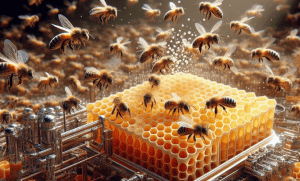
Ensuring Queen Health and Genetics
Ensuring the health and genetics of queen bees is essential for the success of queen rearing and the overall vitality of bee colonies. Here are two important aspects to consider in this process:
- Evaluating Queen Health: Regularly assessing the health of queen bees is crucial to identify any potential issues early on. Look for signs of disease, such as deformed wings or abnormal behavior. It is also important to monitor the queen’s egg-laying patterns. A healthy queen will lay a consistent and adequate number of eggs, ensuring the growth and productivity of the colony. If any health issues are detected, take immediate action, such as replacing the queen or treating for diseases.
- Maintaining Genetic Diversity: Genetic diversity in queen rearing is crucial for the long-term health and survival of bee populations. Inbreeding can lead to weakened colonies and increased susceptibility to diseases. To maintain genetic diversity, avoid using the same breeding lines for consecutive generations. Instead, introduce new genetic material through regularly requeening and acquiring queens from reputable breeders. Additionally, consider participating in queen exchange programs or cooperative breeding efforts to introduce genetic diversity into your colonies.
By prioritizing queen health and genetics, beekeepers can help ensure the continued success of queen rearing and the robustness of their bee colonies. Regular monitoring, prompt action, and conscious breeding practices will contribute to healthier and more resilient bee populations.
Evaluating Queen Health
Regularly assessing the health of queen bees is essential for successful queen rearing and the overall well-being of bee colonies. When evaluating queen health, there are several key factors to consider.
First, observe the queen’s physical appearance. Look for any signs of disease or deformities, such as deformed wings or a bloated abdomen. A healthy queen should have strong wings, a sleek body, and no visible signs of illness or injury.
Next, pay attention to the queen’s behavior. A healthy queen will be active and agile, moving confidently throughout the hive. She should also display a calm and gentle temperament, as aggressive behavior can be a sign of health issues or poor genetics.
Another important aspect to evaluate is the queen’s egg-laying patterns. A healthy queen will lay a consistent and adequate number of eggs, ensuring the growth and productivity of the colony. If you notice a decrease in egg-laying or irregular patterns, it may indicate a problem with the queen’s fertility or overall health.
Lastly, consider conducting routine disease screenings. This can involve sampling bees from the colony and testing for common diseases such as American foulbrood or chalkbrood. Early detection of diseases can help prevent their spread and allow for prompt intervention.
If any health issues are detected during the evaluation, it is essential to take immediate action. This can include replacing the queen or implementing treatment protocols to address any diseases or infections.
By regularly evaluating queen health, beekeepers can ensure the vitality and productivity of their colonies and increase the success rate of queen rearing endeavors.
Maintaining Genetic Diversity in Queen Rearing
Maintaining genetic diversity is crucial in queen rearing to ensure the long-term health and viability of bee colonies. By maintaining a diverse genetic pool, beekeepers can help prevent inbreeding and the negative effects associated with it, such as decreased colony productivity and increased susceptibility to diseases and parasites.
To maintain genetic diversity, beekeepers should avoid relying solely on a single queen source or strain. Instead, they should consider introducing new genetics into their colonies on a regular basis. This can be done by purchasing queens from reputable breeders or participating in queen exchange programs with other beekeepers. Another option is to raise queens from different colonies within their own apiary or collect feral colonies that exhibit desirable traits.
When selecting queens for breeding purposes, it is important to choose healthy and productive queens with desirable traits such as disease resistance, honey production, and gentle temperament. By carefully selecting and breeding from these queens, beekeepers can improve the overall quality of their colonies while maintaining genetic diversity.
Regularly monitoring for signs of inbreeding, such as decreased colony vigor or increased aggression, is also important. If these signs are detected, introducing new genetics becomes even more critical to prevent further complications.
Overall, maintaining genetic diversity in queen rearing is fundamental for the long-term success and sustainability of beekeeping operations. By incorporating a diverse range of genetics, beekeepers can help ensure strong and resilient colonies that are better equipped to adapt to changing environmental conditions and challenges.
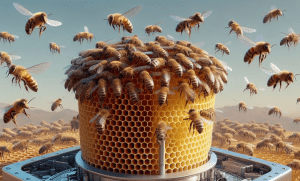
Queen rearing is an essential skill for beekeepers looking to maintain healthy and productive colonies. By mastering the art of queen rearing, beekeepers can ensure a steady supply of strong and genetically diverse queens, which are vital for the overall success and sustainability of their operations.
Throughout this article, we have explored various queen rearing techniques, such as grafting and using queen rearing kits, and discussed the importance of maintaining genetic diversity in queen rearing. We have also provided tips and insights into efficient queen rearing management.
By understanding the different queen development stages and regularly evaluating queen health, beekeepers can make informed decisions when selecting queens for breeding purposes. It is crucial to choose healthy and productive queens with desirable traits, such as disease resistance and honey production.
Maintaining genetic diversity is another critical aspect of queen rearing. Beekeepers should avoid relying solely on a single queen source or strain and instead introduce new genetics into their colonies regularly. This can be done through purchasing queens from reputable breeders, participating in queen exchange programs, or raising queens from different colonies within their own apiary.
In conclusion, mastering the art of queen rearing is a valuable skill for beekeepers. By carefully selecting and breeding from healthy and genetically diverse queens, beekeepers can ensure the long-term health and viability of their colonies. With strong and resilient colonies, beekeepers are better equipped to overcome challenges and thrive in their beekeeping endeavors.
Benefits of Mastering Queen Rearing Techniques
Mastering the techniques of queen rearing can have numerous benefits for beekeepers. Let’s explore some of these advantages:
- Genetic Control: By rearing their own queens, beekeepers have the opportunity to select the best genetic traits in their colonies. They can choose queens with desirable traits such as disease resistance, honey production, and calm behavior.
- Queen Availability: Rearing queens in-house ensures a steady supply of queens whenever needed. This is particularly useful during the swarming season or when requeening is necessary due to a failing queen or poor colony performance.
- Colony Expansion: With queen rearing, beekeepers can easily and cost-effectively expand their colonies by creating new ones. This is especially beneficial for beekeepers looking to increase their hive count or replace colonies lost to winter mortality.
- Colony Resilience: By rearing their own queens, beekeepers can develop resilient colonies that are well adapted to local conditions. This can improve colony survival rates and overall productivity.
- Educational Value: Engaging in queen rearing allows beekeepers to deepen their understanding of honey bee biology and behavior. It provides a hands-on learning experience, helping beekeepers become more knowledgeable and skilled in beekeeping practices.
- Financial Savings: Rearing queens in-house can help beekeepers save money by reducing the need to purchase queens from external sources. This cost-effective approach can benefit beekeepers, especially those with a limited budget or who are operating on a small scale.
Overall, mastering queen rearing techniques empowers beekeepers to have more control over the genetic makeup and productivity of their colonies. It offers numerous benefits, including genetic selection, colony expansion, and improved colony resilience. Becoming proficient in queen rearing can greatly enhance the beekeeping experience and contribute to long-term success in the apiary.
Common Challenges and Solutions in Queen Rearing Practices
Queen rearing practices can sometimes present challenges for beekeepers. However, with proper knowledge and preparation, these challenges can be overcome. Here are two common challenges in queen rearing and their solutions:
- Failure to Raise Queen Cells: One challenge in queen rearing is the failure to successfully raise queen cells. This can occur due to factors such as poor larval quality, inadequate nutrition, or improper temperature control. To overcome this challenge, beekeepers should ensure that they have healthy and strong larvae to graft into the queen cups. It is important to provide the larvae with a nutritious diet and maintain proper temperature and humidity levels in the queen rearing environment. Additionally, beekeepers should regularly inspect the queen cells and remove any that are not developing properly to prevent weak or defective queens from emerging.
- Mating Issues: Another challenge in queen rearing is ensuring successful mating of the newly emerged queens. Mating issues can arise due to unfavorable weather conditions, mating with drones from undesirable genetic backgrounds, or the presence of competing queen cells in the colony. To address this challenge, beekeepers can take measures such as providing ample drones from known genetic sources, placing queen mating nucs in areas with favorable weather conditions, and ensuring that the colonies are queenless before introducing the new queens. Regular monitoring of the mating process can also help identify and address any potential issues.
By being aware of these common challenges and implementing appropriate solutions, beekeepers can increase their success in queen rearing. It is important to continuously learn and adapt techniques to overcome any obstacles that may arise. With patience and persistence, beekeepers can successfully rear their own queens and reap the benefits of a thriving and genetically diverse apiary.
Thank you for joining us on this journey to master the art of queen rearing techniques and tips. We hope that you have gained valuable knowledge and insights to enhance your beekeeping operation. If you have any questions or would like to share your own experiences, feel free to reach out. Let’s continue to elevate our beekeeping expertise together!
Important Notice on Content Rights
All rights reserved to Bees Partners © 2025. Copying, republishing, translating, or quoting more than 10% of this content is prohibited without prior written permission. For commercial or academic use, please contact: info@beespartners.dk.
Note: Limited quotation is allowed with clear source attribution and a direct link to the original article.
